When it comes to maintaining and protecting surfaces that are exposed to water – whether it’s for your boat, pool, or marine equipment – using the right type of paint is crucial. Underwater environments present unique challenges such as constant exposure to moisture, saltwater, and UV rays. The best paint for underwater use must be durable, resistant to wear and tear, and capable of withstanding these harsh conditions. We’ll explore the different types of underwater paints, how to choose the best one, and answer some frequently asked questions about underwater paints.
Why Is Underwater Paint Necessary?
Water is a powerful and often corrosive element, capable of deteriorating the materials exposed to it. Without proper protection, underwater surfaces can suffer from algae buildup, rust, erosion, and other forms of damage. Whether you’re working on a boat hull, a pool, or any submerged structure, underwater paint acts as a shield that enhances durability and longevity.
Underwater paint for boats, for example, is designed to provide a protective barrier against the damaging effects of saltwater. In pools, a good underwater paint helps maintain the surface, resisting algae growth and enhancing aesthetics. Underwater paints also prevent corrosion on metal and concrete surfaces that are regularly exposed to water.
What to Look for in the Best Paint for Underwater Use
When selecting the best paint for underwater use, several key factors must be considered:
1. Water Resistance
The primary feature of any underwater paint is its ability to withstand constant exposure to water. Whether it’s fresh or saltwater, the paint needs to resist water penetration and retain its integrity.
2. Durability
Underwater surfaces are constantly exposed to wear and tear from water currents, tides, and other environmental elements. The best paint for underwater use is durable and can withstand these forces, lasting for years without fading, chipping, or peeling.
3. Resistance to Algae and Fungi
Water creates an ideal environment for the growth of algae and fungi, which can damage painted surfaces and make them unsightly. Look for a paint that contains anti-fungal and anti-algal properties to prevent biological growth.
4. UV Protection
Even underwater surfaces are not immune to the effects of ultraviolet (UV) rays, especially if they are near the surface of the water or in shallow areas. UV protection is important to prevent the paint from breaking down or losing its effectiveness.
5. Adhesion
The paint needs to bond strongly to the surface it is being applied to, whether it’s wood, metal, concrete, or fiberglass. Strong adhesion ensures the paint doesn’t peel or chip off over time.
6. Ease of Application
While not always a dealbreaker, ease of application is an important factor. You want a paint that can be applied evenly, with minimal preparation and clean-up.
7. Environmental Considerations
For eco-conscious consumers, choosing a paint with low VOC (volatile organic compounds) content is essential. This ensures the paint does not contribute to air pollution or water contamination when it wears off.
Types of Paint for Underwater Use
There are several types of underwater paints designed for specific applications. Let’s take a closer look at some of the most popular options:
1. Epoxy-Based Paints
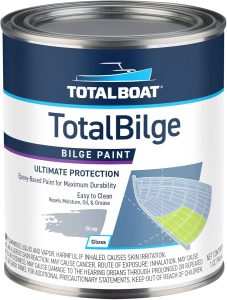
Epoxy paint is one of the most durable options for underwater surfaces. It forms a strong, hard coating that bonds well to various surfaces like wood, metal, and concrete. Epoxy paints are resistant to water, chemicals, and physical wear, making them perfect for boat hulls and other submerged structures. Additionally, they have excellent adhesion and longevity.
Pros:
- Highly durable and resistant to water.
- Great for use on metal and fiberglass.
- Provides excellent protection against corrosion.
Cons:
- Requires proper surface preparation before application.
- May need to be applied in multiple layers.
2. Polyurethane Paints
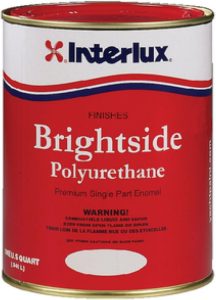
Polyurethane paints are known for their smooth finish and resistance to UV rays. While they are not as tough as epoxy paints, they still provide excellent protection against water and weathering. They are ideal for applications where aesthetics are important, such as pool surfaces.
Pros:
- Offers UV protection, which helps maintain color and finish.
- Easy to apply and has a smooth, glossy finish.
- Suitable for both fresh and saltwater environments.
Cons:
- Not as durable as epoxy.
- May not offer as much resistance to physical wear.
3. Anti-Fouling Paints
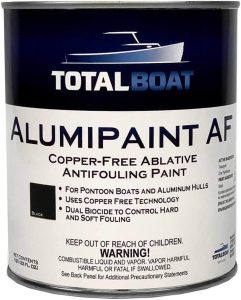
Anti-fouling paints are specifically designed for use on boat hulls and other submerged structures. These paints prevent the growth of algae, barnacles, and other marine organisms that attach to the surface. Anti-fouling paints typically contain copper or zinc-based compounds, which act as biocides to keep the surface free from marine life.
Pros:
- Effective at preventing marine organism growth.
- Reduces the need for frequent cleaning of submerged surfaces.
- Ideal for boat hulls, docks, and other marine equipment.
Cons:
- May be toxic to marine life due to the chemicals used.
- Can be expensive compared to other options.
4. Chlorinated Rubber Paints
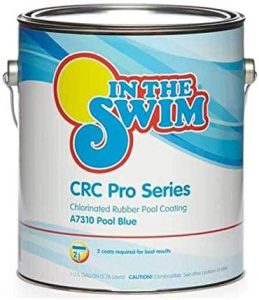
Chlorinated rubber paints are commonly used for pool surfaces. They provide a flexible and durable coating that can withstand constant water exposure. They also dry quickly, making them ideal for situations where downtime is a concern.
Pros:
- Ideal for pool surfaces.
- Dries quickly and forms a flexible, durable coating.
- Resists algae and fungi growth.
Cons:
- Less effective in harsh marine environments.
- May not bond as well to certain surfaces.
5. Acrylic-Based Paints
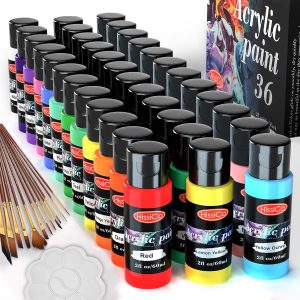
Acrylic paints are water-based and known for their environmental friendliness. They are easy to apply, dry quickly, and provide a smooth finish. While not as durable as epoxy or polyurethane, acrylic paints are still a good option for fresh water applications, such as pools or ponds.
Pros:
- Environmentally friendly with low VOC content.
- Easy to apply and dries quickly.
- Good for fresh water applications.
Cons:
- Less durable than epoxy and polyurethane.
- Not suitable for saltwater or high-traffic areas.
Top Recommendations for Best Paint for Underwater Use
Here are some of the best underwater paints available in the market:
1. Interlux InterProtect 2000E
Interlux InterProtect 2000E is a popular epoxy-based underwater paint that is ideal for boat hulls and other submerged structures. It provides excellent protection against water and corrosion and is known for its durability.
2. Rust-Oleum Marine Coatings Topside Paint
Rust-Oleum is a well-known brand in the marine coatings industry, and their Marine Coatings Topside Paint is perfect for boat hulls and other outdoor surfaces. It offers superior UV protection and is highly resistant to water damage.
3. TotalBoat Wet Edge Marine Topside Paint
TotalBoat Wet Edge Marine Topside Paint is another excellent option for boat owners. It provides a high-gloss finish and is available in several colors. It’s highly durable and resistant to both saltwater and UV rays.
4. Sherwin-Williams Pool & Spa Paint
Sherwin-Williams offers a high-quality pool paint that is perfect for underwater applications in pools. It provides excellent protection against algae and fungi growth and is highly resistant to wear and tear.
Frequently Asked Questions
- Can underwater paint be used on both fresh and saltwater surfaces?
Yes, many underwater paints are designed to work in both fresh and saltwater environments. However, make sure to check the product specifications before purchasing. - How long does underwater paint last?
The lifespan of underwater paint depends on several factors, including the type of paint, the surface it’s applied to, and environmental conditions. Generally, you can expect it to last between 2 to 5 years. - Can I paint directly onto a submerged surface?
It’s essential to prepare the surface before applying underwater paint. Clean the surface thoroughly, remove any old paint or debris, and ensure the surface is dry before applying the paint. - How do I remove old underwater paint?
To remove old underwater paint, you’ll need to use a paint remover or sandpaper to strip it off. Be sure to follow the manufacturer’s instructions for the best results. - Is anti-fouling paint harmful to marine life?
Anti-fouling paint contains biocides like copper and zinc to prevent marine growth, but these chemicals can be harmful to marine life. It’s important to use these paints in accordance with environmental guidelines. - Can I use regular outdoor paint for underwater applications?
Regular outdoor paint is not designed for underwater environments and will not withstand constant exposure to water. It’s essential to use specialized underwater paint for the best protection. - What’s the difference between epoxy and polyurethane underwater paints?
Epoxy paints are highly durable and provide excellent corrosion resistance, making them ideal for boats and other submerged metal surfaces. Polyurethane paints, on the other hand, are better for surfaces exposed to UV rays and offer a smooth, glossy finish.
Conclusion
Choosing the best paint for underwater use is essential for ensuring the longevity and protection of submerged surfaces. Whether you’re looking to protect your boat hull, pool, or dock, the right underwater paint can make a significant difference. Be sure to consider factors like water resistance, durability, and environmental impact when making your decision. With the right paint, you can protect your underwater structures from the damaging effects of water, ensuring they stay in great condition for years to come.


Leave a Reply